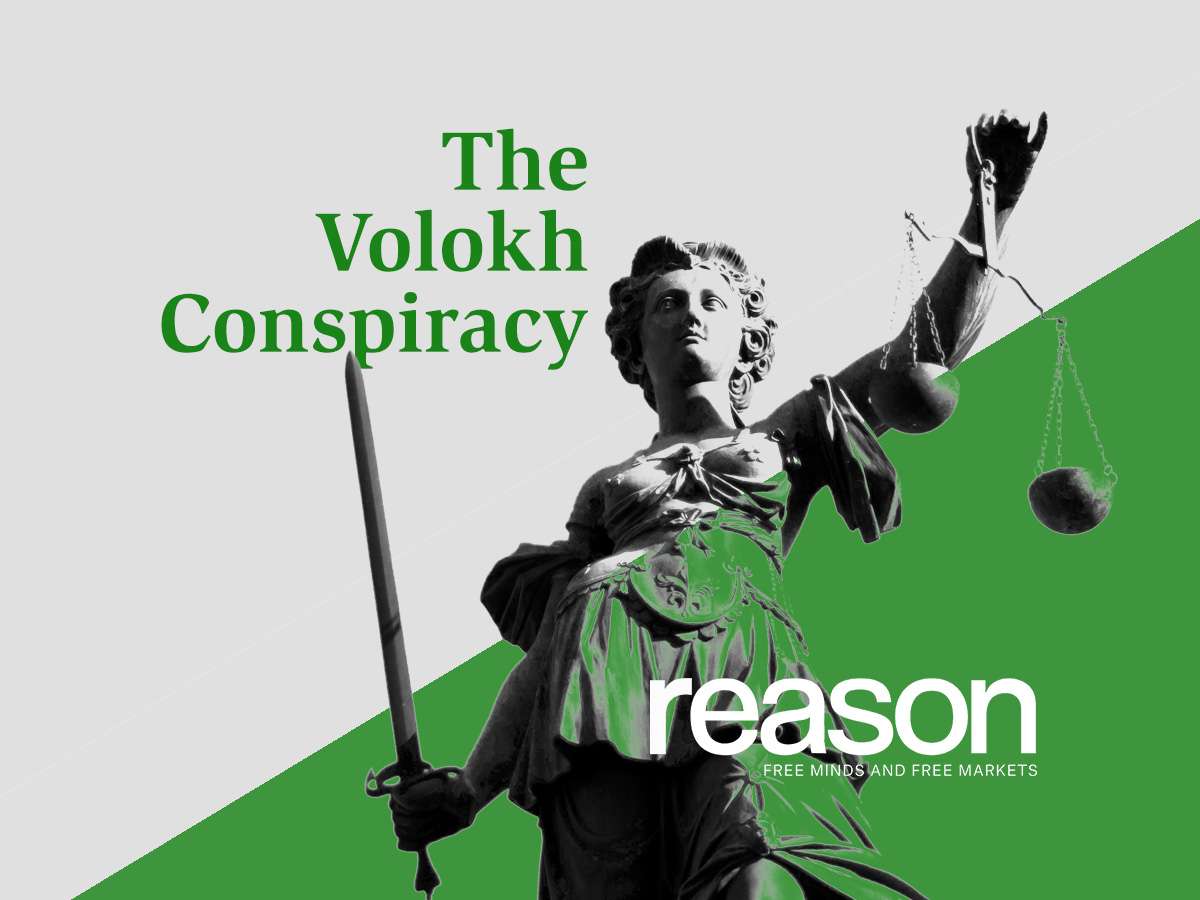Conviction for Writing Software For ISIS Upheld
[ad_1]
The following is a list of the most recent articles. U.S. v. OsadzinskiThe Seventh Circuit ruled yesterday (Judge Michael Scudder joined by Judges Diane Wood & Amy St. Eve).
Thomas Osadzinski is appealing his conviction of providing material support to terrorist organization. In 2019, he created a program that allowed ISIS and its followers to quickly duplicate terrorist videos online. This enabled them to stay ahead of efforts made by the United States and western governments to thwart their media campaign. Osadzinski taught his computer program to people he believed to be ISIS supporters and then used it to compile a large collection of ISIS media.
The court found that the conviction was consistent under the First Amendment. Holder v. Humanitarian Law Project (2010):
By its terms 18 U.S.C. § 2339B makes it a crime to “knowingly provid[e] Material support or resources provided to a terrorist organization abroad. The Congress defined “material resources or support” as “any tangible or intangible property or service.” “Services” includes any “expert advice or help” that “derives from scientific, technological or other specialized knowledge.” … [T]The Supreme Court of the United States has a new ruling. HLP explained that § 2339B did not prevent a person from freely speaking about, or even independently advocating for, a terrorist organization. Rather, the Court made clear that the material-support statute prohibited “only a narrow category of speech” that falls outside the protection of the First Amendment—speech “to, under the direction of, or in coordination with foreign groups that the speaker knows to be terrorist organizations.” …
In order to resolve this appeal, we accept Osadzinski’s argument that all of his offensive conduct qualifies for “speech” under the First Amendment. This includes several activities which have been recognized as expressions, such as writing a manual and an article, forwarding multimedia links and sending pro-ISIS social media messages. It also includes Osadzinski’s creation of source code and execution, as well as his distribution. Other circuits have found that this constitutes “speech”, under the First Amendment.
In this case we do not have to define the contours of First Amendment and computer code. The government seems to acknowledge that Osadzinski acted in a speech-like manner throughout the relevant conduct. We are comfortable assuming, without definitively deciding, that Osadzinski’s offense conduct was entirely expressive activity within meaning of the First Amendment.
However, our analysis does not end with this observation. Osadzinski was engaged in expressive activities, but that does not mean the First Amendment covers the activity unqualifiedly. The law has recognized that speech can lose its constitutional protection in limited circumstances and even violate the law. Take, for instance, incitements that are likely to “produce” violence.[e] The Supreme Court refused to protect “imminent lawless action” from content-based restrictions. Brandenburg v. Ohio (1969). Or consider “true threats” of violence, which the Court likewise held to be a less protected category of speech ….
The Supreme Court’s Decision in HLP These principles were the basis of its work. The Court in no way questioned the right to independently express personal views—positive, negative, or neutral—about terrorist organizations. It was also clear that this right had limits. One of these limits is Congress’s power to prohibit expressive activities that amount to material support for a terrorist organization abroad, where that support is directed at, coordinated with, or addressed to that organization.
The jury found that Osadzinski had acted in coordination with or under the direction of ISIS—which HLP The First Amendment does not protect the content of the video. The point is clear, as the district judge instructed the jurors to not return a verdict of guilty unless they could prove beyond a reasonable question that Osadzinski intentionally acted in coordination with or at the command of a terrorist organization. The court went on to explain that “[i]Independent activity or advocacy [ ] The court emphasized that “advocacy is not prohibited”, and to remove any doubt, it added in a separate order: “Advocacy which is done independently from the terrorist organization, not at its direction, or in coordination with them does not violate the statute.” In returning its verdict the jury had to find that Osadzinski was engaging in unprotected expression in concert with ISIS. On this record and after conducting our own independent legal review, we agree that Osadzinski’s conviction for material support did not violate the First Amendment.
Osadzinski, backed by amicus and a broader legal argument, presses a point even broader. He claims that affirming the conviction would almost eliminate his constitutional right to independently support a terrorist organisation. Osadzinski points out that, if the general call for support of a group is enough to qualify as “direction”, under HLP, then anyone who watches a video like Inside 8 would subsequently be barred from engaging in core First Amendment activity—viewing and sharing others’ viewpoints—simply because the terrorist group asks its supporters to do so.
Osadzinski has a good point. Any holding that would eliminate—explicitly or otherwise—a person’s right to engage in independent advocacy for a terrorist organization would conflict with long-recognized constitutional principles. We have noted that section 2339B doesn’t prohibit people from expressing their sympathy for the views expressed by a terrorist organization. We reject any interpretations of “coordination” and “direction” which would prohibit an expression aligned to that view.
But Osadzinski’s baseline assumption is mistaken. He wasn’t convicted for watching Inside 8 or engaging in what would normally be considered independent advocacy. Far from it. Osadzinski’s activity was closely coordinated with ISIS, its media office, at every stage. He provided software to organize and duplicate media, and to disseminate it to a wider public while circumventing censors. Our affirming his conviction respects these legal lines….
The court also held that § 2339B clearly applied to Osadzinski’s behavior:
We have no trouble concluding Osadzinski’s acts qualified as a “service” that materially supported ISIS. Remember that “service” is defined in the statute as “expert assistance or advice” “derived out of scientific, technical or any other specialized information.” Osadzinski delivered exactly that. He used his computer skills to create and deploy an automated script that replicated ISIS propaganda in order to circumvent online censorship. He then instructed ISIS supporters to use the script for the same purpose. In doing so, he provided material support to ISIS (and its media campaign) within the meaning of § 2339B….
Osadzinski emphasizes that the term “service” in § 2339B, as construed in HLP, extends only to concerted speech activity—that which is addressed to, coordinated with, or directed by ISIS. We accept Osadzinski’s assumption that his offense conduct was expressive activity. We still conclude that Osadzinski’s conduct is unambiguously concerted.
HLP did not present the Supreme Court with an occasion to drill down into how much “coordination” or “direction” is required to amount to the provision of “services” within the meaning of § 2339B. The line dividing concerted conduct from independent advocacy will doubtless emerge as courts continue to consider challenges to convictions under § 2339B. We only need to decide if Osadzinski’s behavior clearly falls on the prohibited side.
It did. Osadzinski responded to what he believed to be a solemn ISIS directive contained in the Inside 8 Video: “Support khilafah digitally” by “adopting[ing] “Strivulent” is the message that its official media puts out.[ing] To disseminate the information far and wide.” In his discussions with undercover law enforcement officers, he specifically referred to Inside 8’s directive:[I]If they close one, they can open three more. And if three are closed, then open another thirty.” He did just that.
Osadzinski spent months answering ISIS’s plea for help with its media campaign. He helped ISIS’s media office by providing English subtitles and voiceovers to their videos. He organized and compiled a large database of high-resolution ISIS video files for future distribution. He designed a software to automatically organize and multiply ISIS online content. He also spent several days and hours troubleshooting with other ISIS supporters. Osadzinski’s actions went beyond his role as an independent advocate. He effectively fused his voice with ISIS’s media offices by improving, contributing, compiling and organizing their official publications.
Throughout, Osadzinski coordinated his actions—or, at the very least, attempted to coordinate them—with ISIS members. At least twice he repeated “[i]Tell them to come to you if they need help with their security. When Agent 1 offered Osadzinski the opportunity to contact ISIS’s official bureau of media, he replied he hoped to be able to do so in the “near future.” He then invited Agent 3 to share “anyone’s” ISIS media channels. [he] trusted.” Osadzinski was not hesitant when Agent 2 asked him for instructions on how he should run the computer software that he would take back to ISIS. He wrote a step by step guide for ISIS followers.
Osadzinski had plans to go further. He told Agent 3 he planned to convert the ISIS videos he had compiled into a torrent so that they could be distributed widely without fear of censorship. He suggested working with ISIS’s media bureaus in order to organize their online content. Osadzinski, through the dissemination and deployment his code, hoped that the “brothers who have access the disorganized al-Furat Media Center and al-Hayat Media Center will be able organize them or give them access so that I could organize them.” These are not the words a disassociated or independent advocate. They suggest that Osadzinski, at that point, was a self-declared IT servicer of the Islamic State.
Osadzinski emphasizes that at one time in June 2018, he declined Agent 3’s invitation to connect with ISIS. Osadzinski said that while it is true, he only did this because he knew the FBI was watching him. As soon as Osadzinski believed that the FBI surveillance had ended he resumed his coordination with ISIS. In August 2019, he declared that “they stopped following me”, so “now I’m making as much Jihad as possible.” This comment, along with dozens more like it, reflect Osadzinski’s expressed intention to coordinate with ISIS.
Taken together, the totality of the record refutes Osadzinski’s claim that he had no idea his conduct might violate § 2339B. Osadzinski has repeatedly taken concrete actions in response to ISIS’s request for help in combating online censorship. He did this to try and coordinate with ISIS members and the official media bureau, with an expressed intention for that coordination deepen. Such conduct is inconsistent with independent advocacy and is proscribed by § 2339B.
In the final analysis, then, … [Osadzinski] The attempted participation in an activity coordinated or directed by known terrorist organizations. Such activity is both unprotected by the First Amendment and clearly violative of § 2339B….
[ad_2]


